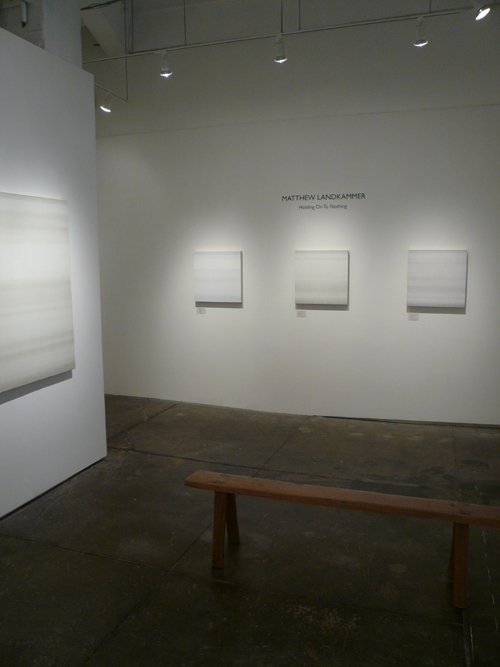2012-2020
This work is the precursor to the current body of work. Post-landscape, and post-horizon, I explored the mood of the Pacific Northwest while carefully avoiding representation.

2013xx | oil & alkyd on canvas | 16" x 48"

2012022501 | oil on canvas | 24" x 24"

2012030501 | oil on canvas | 24" x 24"

2012040801 | oil on canvas | 24" x 24"

2012041501 | oil on canvas | 24" x 24"

2013071201 | oil on panel | 18" x 18"

2013091301 | oil on canvas | 24" x 24"

2012011401 | oil on canvas | 24" x 24"
2009-2011
After the conceptual terminus of Holding On To Nothing, I produced a large number of paintings under the pseudonym of Mandrake Waltham Mantle. These works translated my horizon work into literal landscapes—portraiture of clouds and mountains.

2010012301 | oil on panel | 9.25" x 9.25"

2010073003 | oil on panel | 6" x 6"

2011072402 | oil on panel | 3" x 3"

2011082703 | oil on panel | 3" x 3"

2011092502 | oil on panel | 3" x 3"

2011051002 | oil on panel | 3" x 3"
2006-2008
Artist’s statement from Holding On To Nothing, 2008:
These works require both time and patience.
As with my past work, the horizontal banding is meant to create a restful visual field. The slight inconsistencies that betray my hand and the lack of sharp contrast allow the eye to wander across the surface of the painting, never finding purchase. The kernel of reference is to the landscape of the Great Plains where I was raised; however, the resulting composition has become a device in its own right — a simulacrum of the horizon that is meant to evoke the sensation of openness, without direct allusion.
These works are not minimal. They have more in common with John Cage’s 4'33" than they do with Donald Judd.

exhibition view, Holding On To Nothing, 2008

exhibition view, Holding On To Nothing, 2008

exhibition view, Holding On To Nothing, 2008

exhibition view, Holding On To Nothing, 2008

studio view, Holding On To Nothing, 2008

01020508 | screenprint on paper | edition of 25 | 20" x 20"

01022908 | acrylic on panel | 22" x 22"

01070407 | watercolor on paper | 18" x 18"

01081107 | acrylic on canvas | 48" x 48"

01092207 | watercolor on paper | 18" x 18"

02081107 | acrylic on canvas | 36" x 36"
2001-2005
Artist’s statement from Chromophile, August, 2005:
for Gene
These works are less unlike the paintings I have always meant to make than any paintings I have made otherwise.
Ideally, I see the viewer interacting with these works in three stages:
First, an immediate retinal impression of an all-over color. The decision to use high-key, intensely saturated color is no accident in this regard. Rather, it is an attempt to overwhelm the retina. However, I chose colors that I found pleasing, even candy-like. My intent is not to disgust the viewer with brash color.
Second, as the eyes adjust, a realization of the underlying striations that build the overall color. Built into these striations are inherent flaws, a certain unevenness, that causes a visual "quiver" or shimmering that will not allow the eyes to rest on any given area of the field. Because there are no crisply defined edges in the paintings, the eyes are forced to wander in an attempt to find purchase. Ultimately, allowing the eye's focus to slip slightly is a pleasing way to view the painting.
Third, an emotional reaction to the composition of the horizontal striations, ideally one of calm. Once the viewer settles into the painting, the horizontal composition creates a restful, open feeling. As with my past works, these works are about the open vistas of the Great Plains. Not exactly landscape, but allusions to landscape. Or, perhaps, allusions to the sensation of landscape.

01120105 | acrylic on canvas | 60" x 60" | private collection, Tokyo

02120105 | acrylic on canvas | 60" x 60" | private collection, Tokyo

03120105 | acrylic on canvas | 60" x 60" | private collection, Tokyo

01061205 | acrylic

01071205 | acrylic

01061205 | acrylic

01062605 | acrylic

01073105 | acrylic

canvas detail